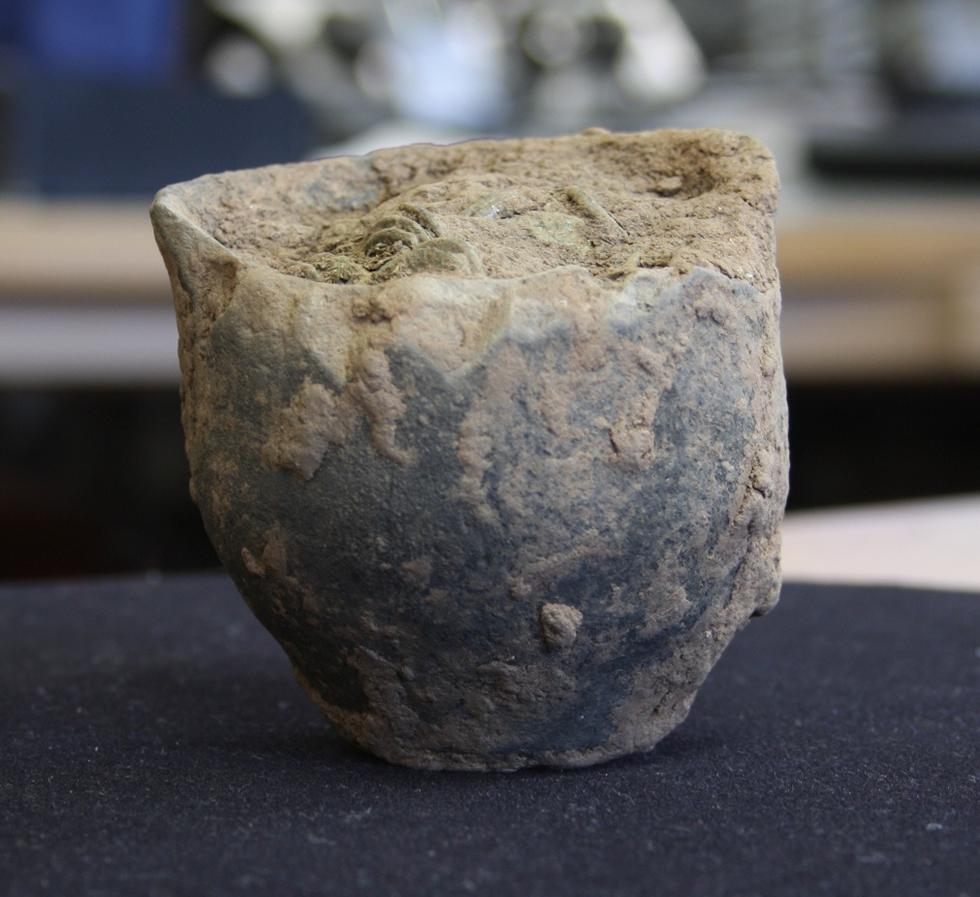
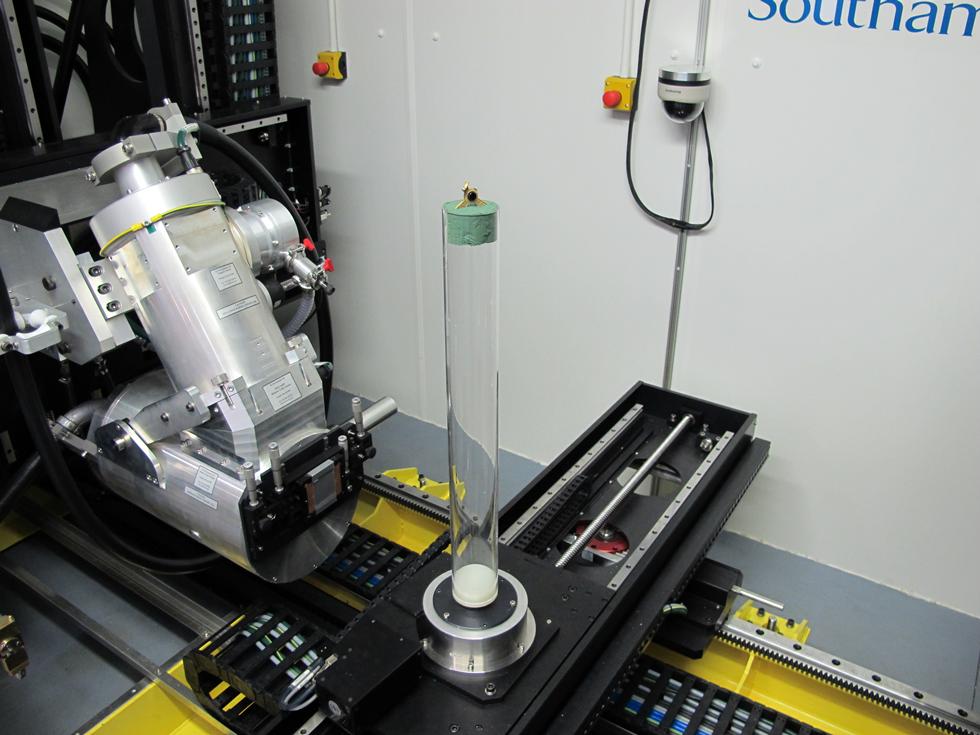
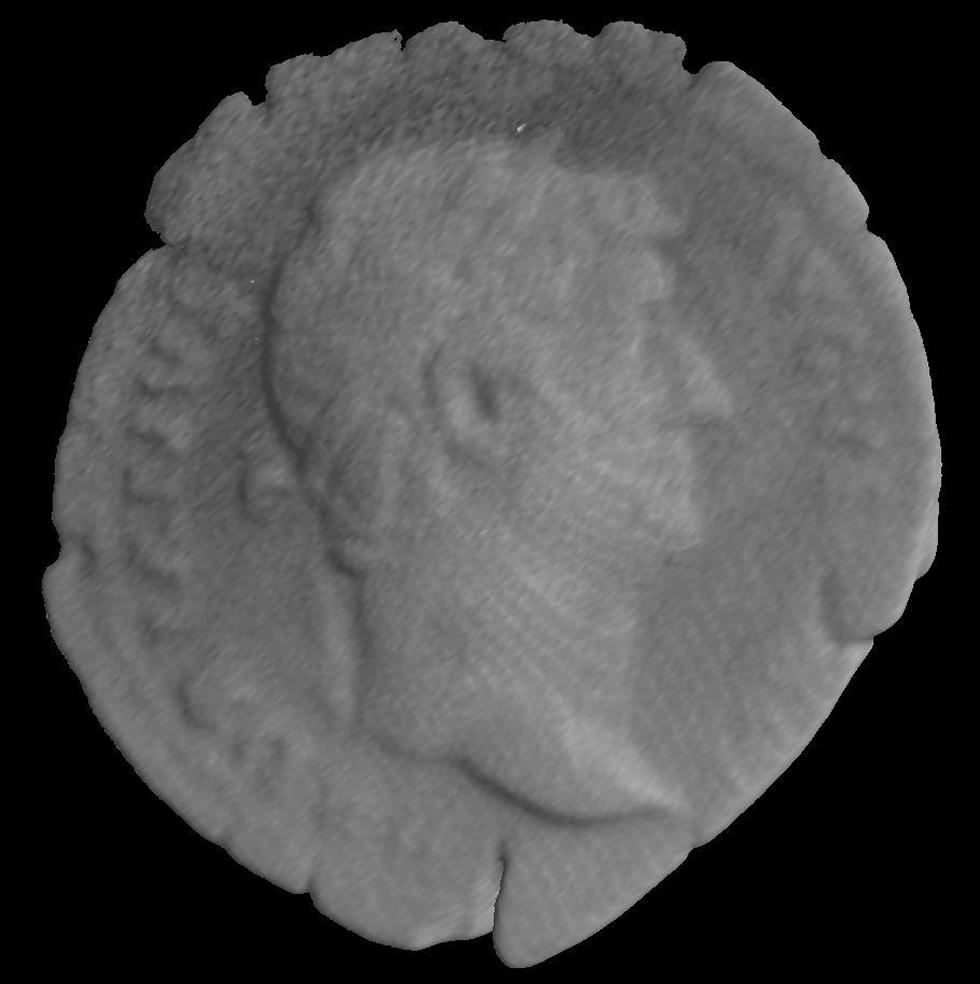
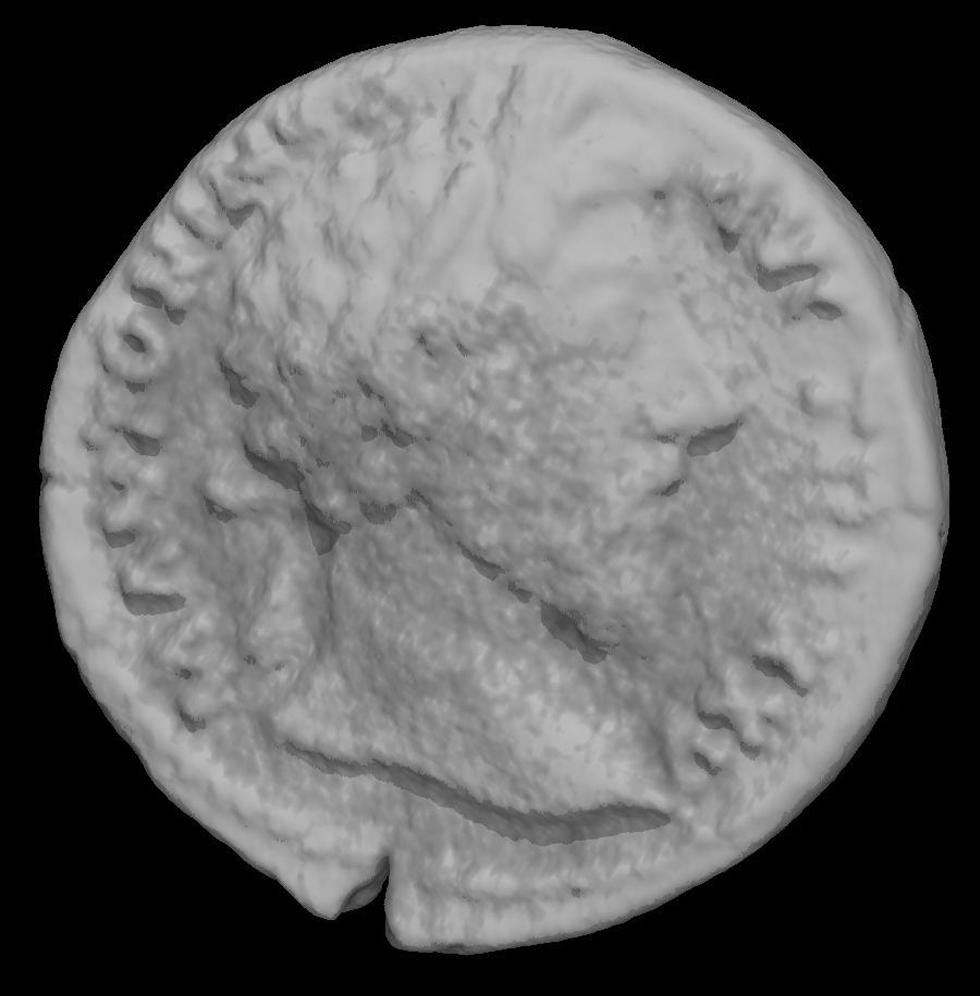
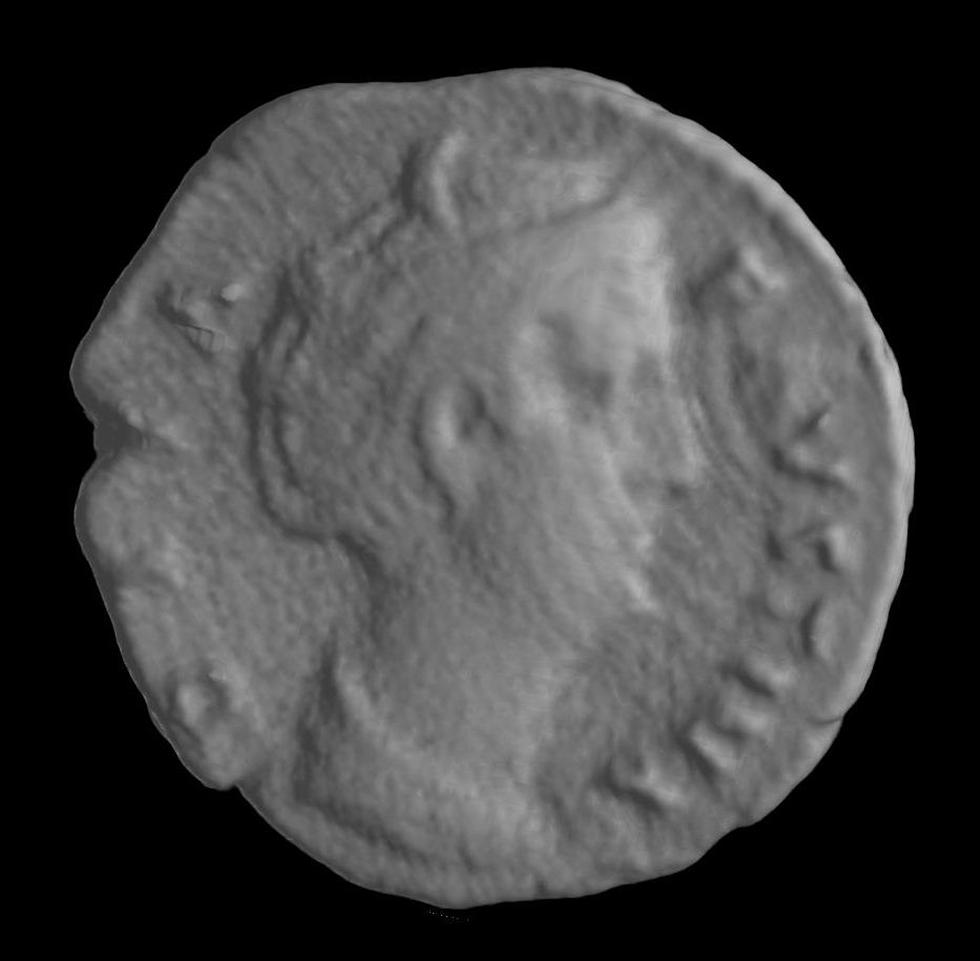
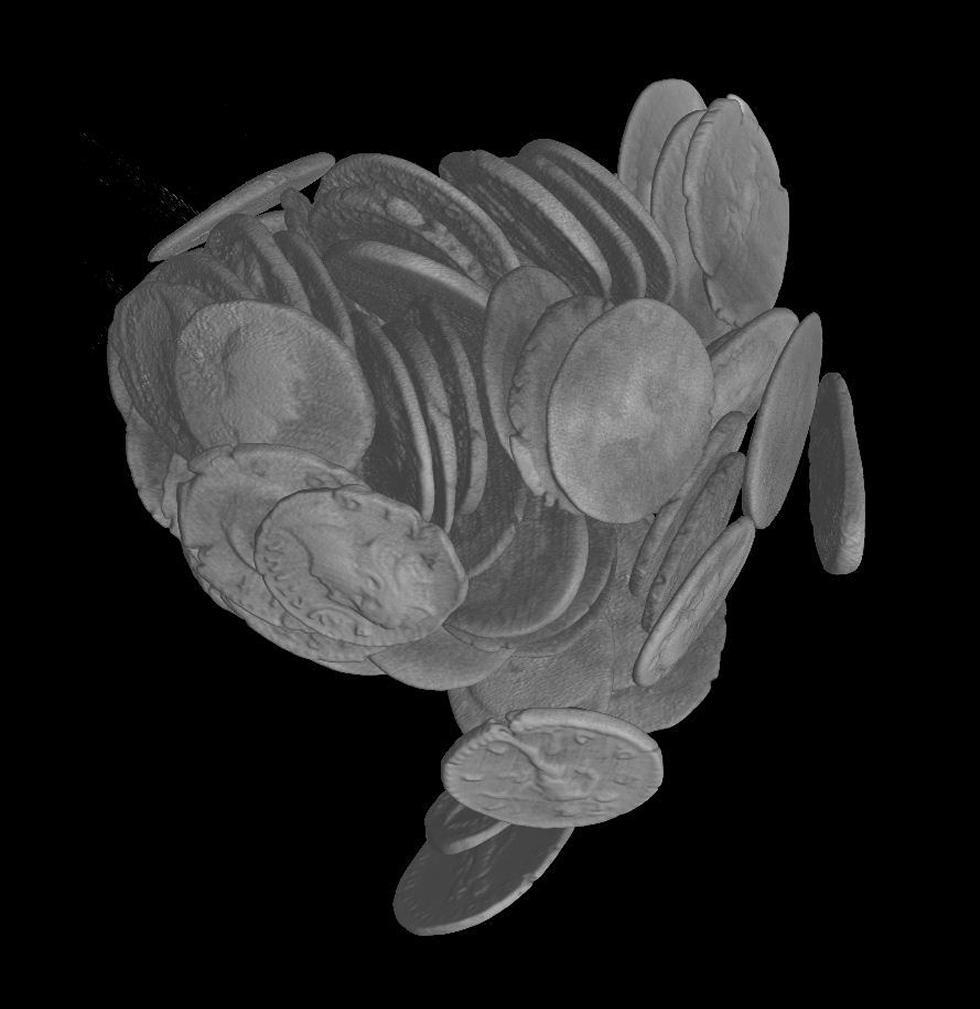
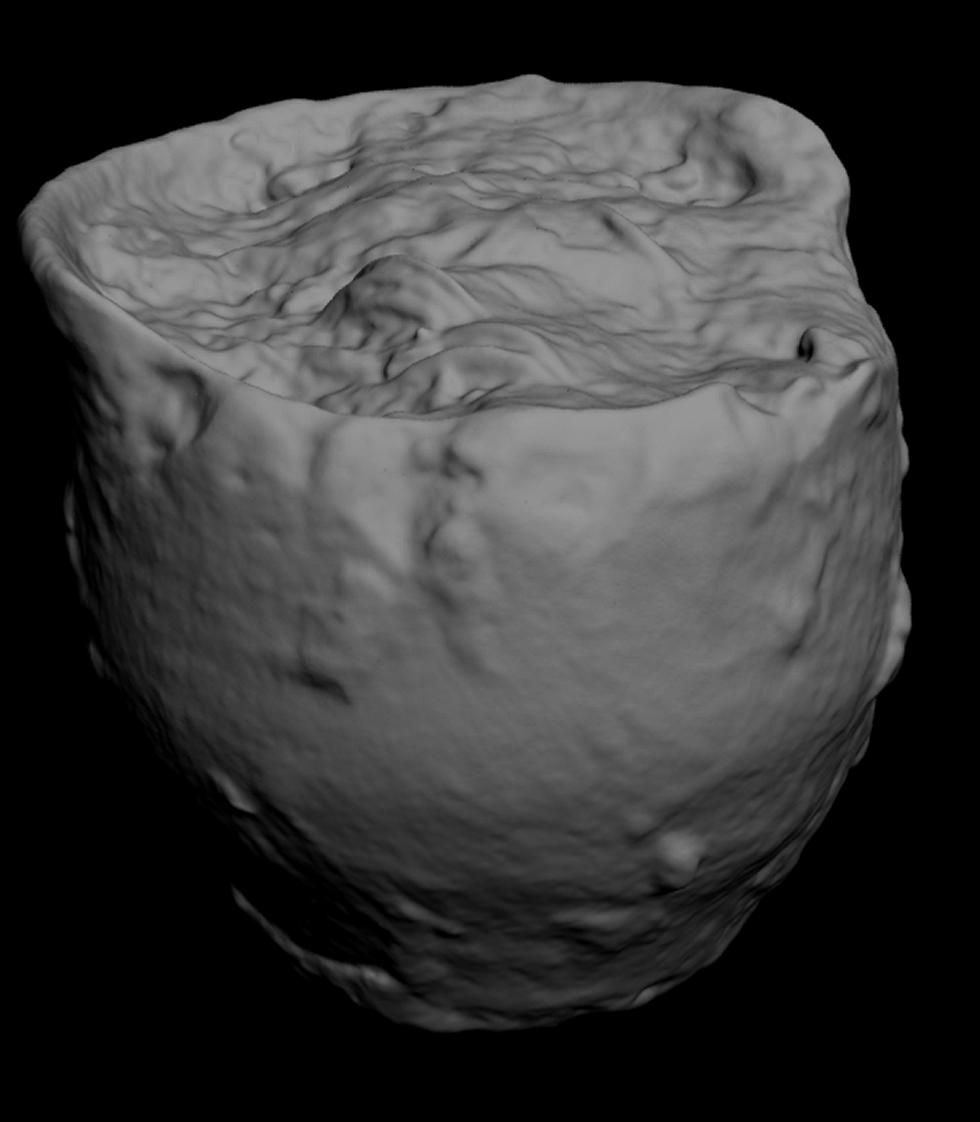
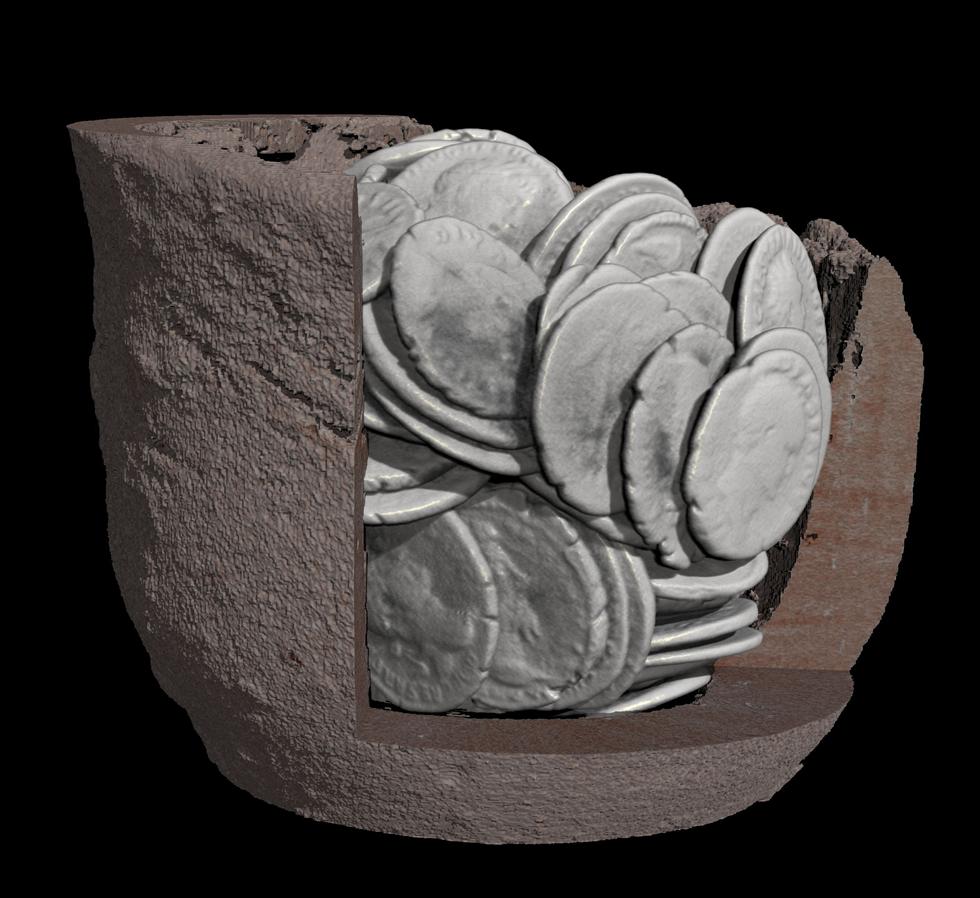
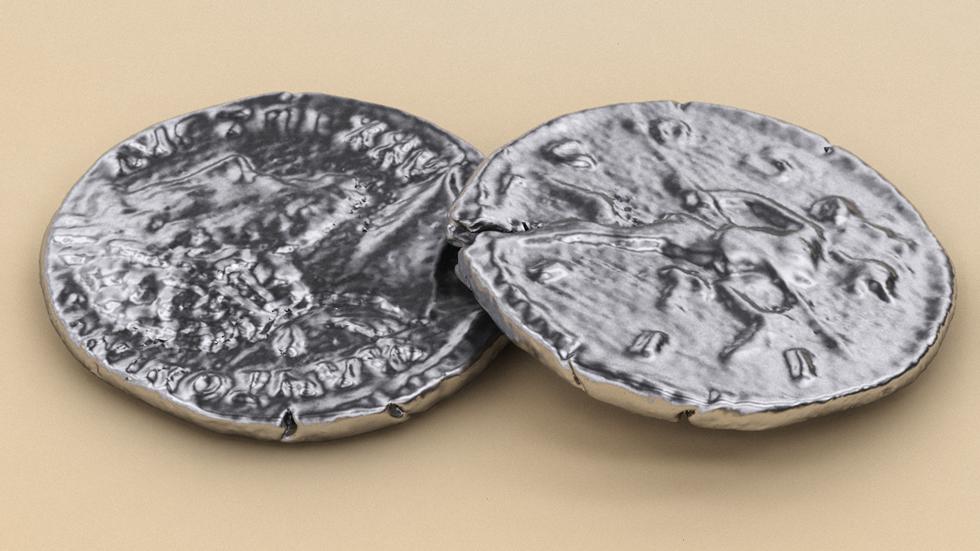
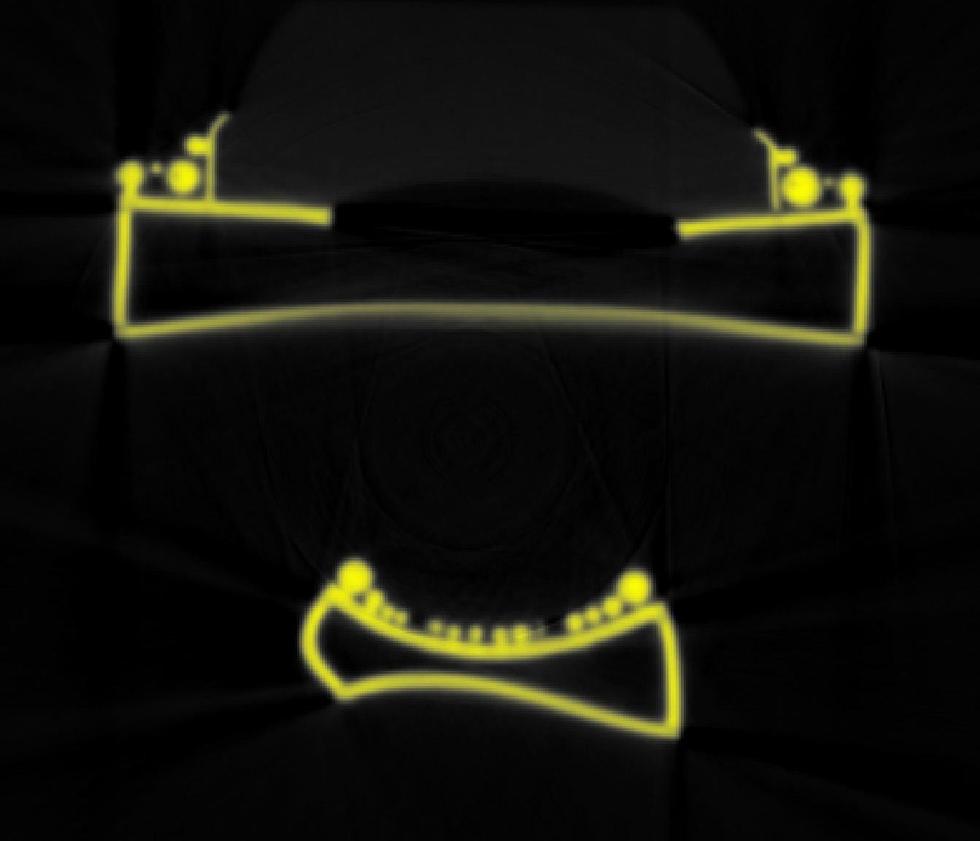
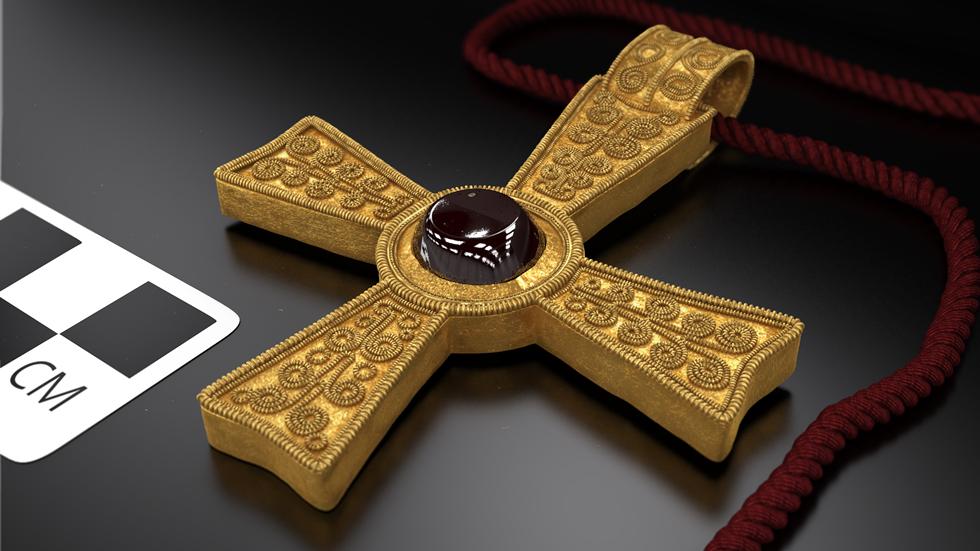
µ-VIS X-Ray Imaging Centre, Archaeological Computing Research Group and the British Museum
Two small Roman pots (Figure 1), both full of coins, were discovered recently by metal-detectorists in Yorkshire. Instead of breaking the pots and extracting the coins they left them intact and reported the finding of the hoard to the Portable Antiquities Scheme, based in the British Museum. Archaeologists at the University of Southampton are working closely with the PAS on a number of projects and so the hoard was then transported to Southampton for imaging via the 450 kVp CT system (Figure 2)
Coins found in containers cannot be counted and identified without emptying them out, which means that it is almost impossible to see how they were packed into the pot – just dropped in randomly, or placed inside in small bundles. Without knowing that, interpreting the hoard is more difficult – was someone just dropping a surplus coin or two into it at the end of a day’s trading, or was someone storing a month’s pay? The other difficulty is that coins are often very corroded and cannot be identified without spending considerable time on cleaning them, which is extremely expensive.
CT Scanning has the potential to solve both these problems. The figures illustrate how the coins can be viewed inside one of the two pots from the rather smaller hoard that we imaged. Here, it looks as if most were in a pile when they went in, perhaps wrapped in a textile that has since decayed away. In both pots we were able to count a number of coins. The imaging data also reveals some of the designs; in particular, there are some thicker coins, with rather large Emperors’ heads on. Those are sestertii, made of copper alloy; the others are silver denarii. Some of the Emperors’ names can be read – Hadrian, who built the great wall, among them (Figure 3). They are probably all of the 2nd century A.D.
We were also able to identify the apparent material properties. The process employed was designed to balance time of capture with resolution of data, providing a realistic assessment of the benefits afforded to the PAS and other bodies in the future. The output images show a maximum resolution of 131.3 µm. Given the number and density of coins with the current setup (Figure 4) we were able to extract high levels of surface details. By reducing the bin size and increasing the number of separate samples it would be possible to capture at a resolution of 65microns, both to discern more surface detail for deeply buried coins and also to significantly improve the recorded surface detail of the outlying coins.
As part of this project we have also begun to compare and integrate various surface and volume imaging and visualisation systems, collaborating across Faculties and funding councils. For example, we are using our computer graphics expertise to produce representations of coins that may never be seen in reality (Figure 5). We are also using digital photogrammetry, laser and white light scanning (in collaboration with the IT Innovation Centre) to produce surface datasets (Figure 6) to compare to the CT data (Figure 7). Finally, we have begun to use a photographic technique known as ReflectanceTransformation Imaging (RTI) funded by the Arts and Humanities Research Council to capture surface texture of CT-imaged objects.
Our research is continuing on this hoard and a range of other archaeological CT case studies, most recently imaging and digitally reconstructing parts of the Anglo Saxon Staffordshire Hoard (Figure 8). This multidisciplinary work is shedding new light on the construction, use and appearance of objects that may now be severely damaged or destined to remain invisible forever.
Access to the coin hoard was provided by Dr Roger Bland of the Portable Antiquities Scheme at the British Museum. Access to the Staffordshire Hoard was provided by Linda Spurdle from Birmingham City Council.
Miles, James, et al. "The use of computed tomography for the study of archaeological coins." Journal of Archaeological Science: Reports 6 (2016): 35-41.